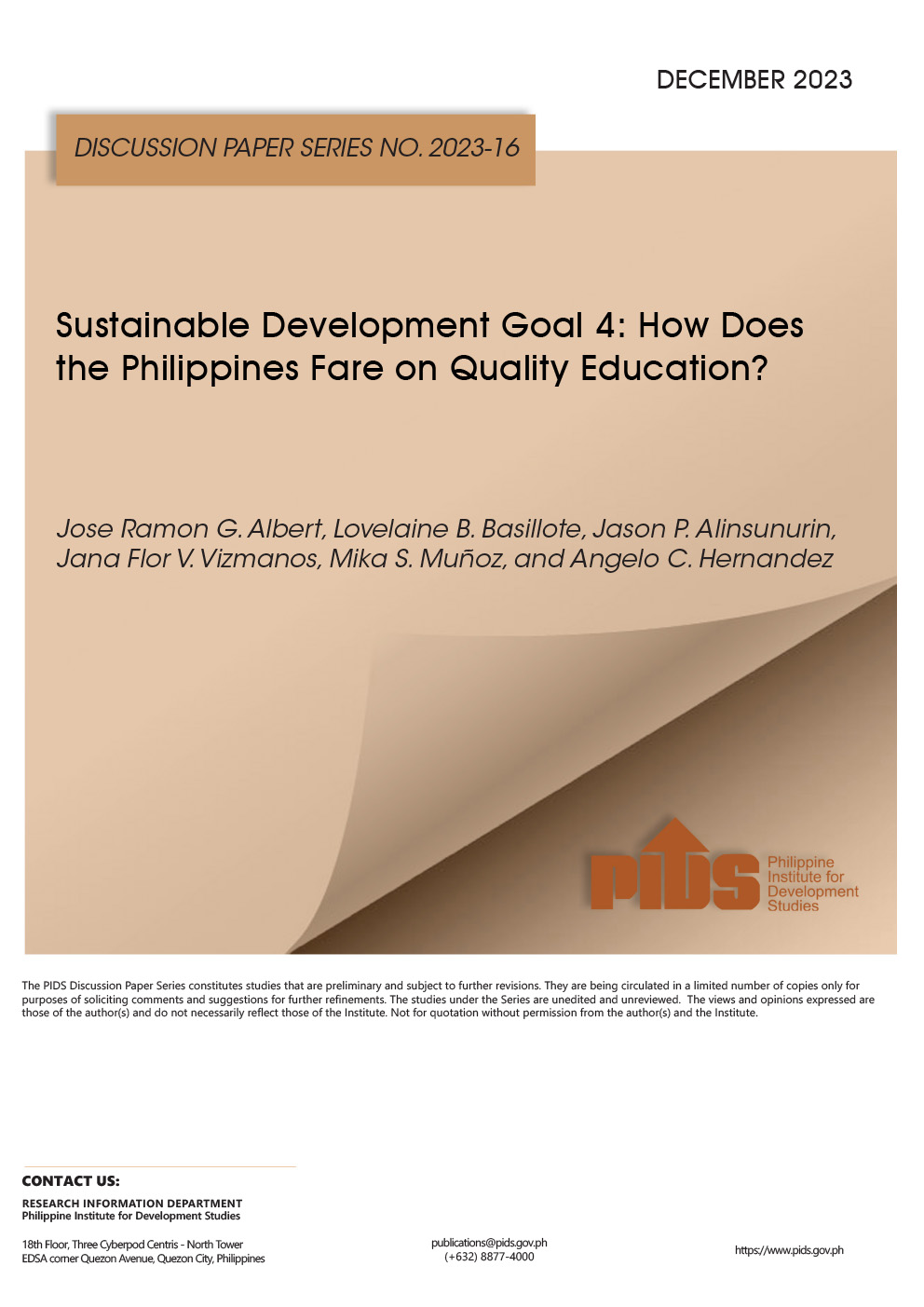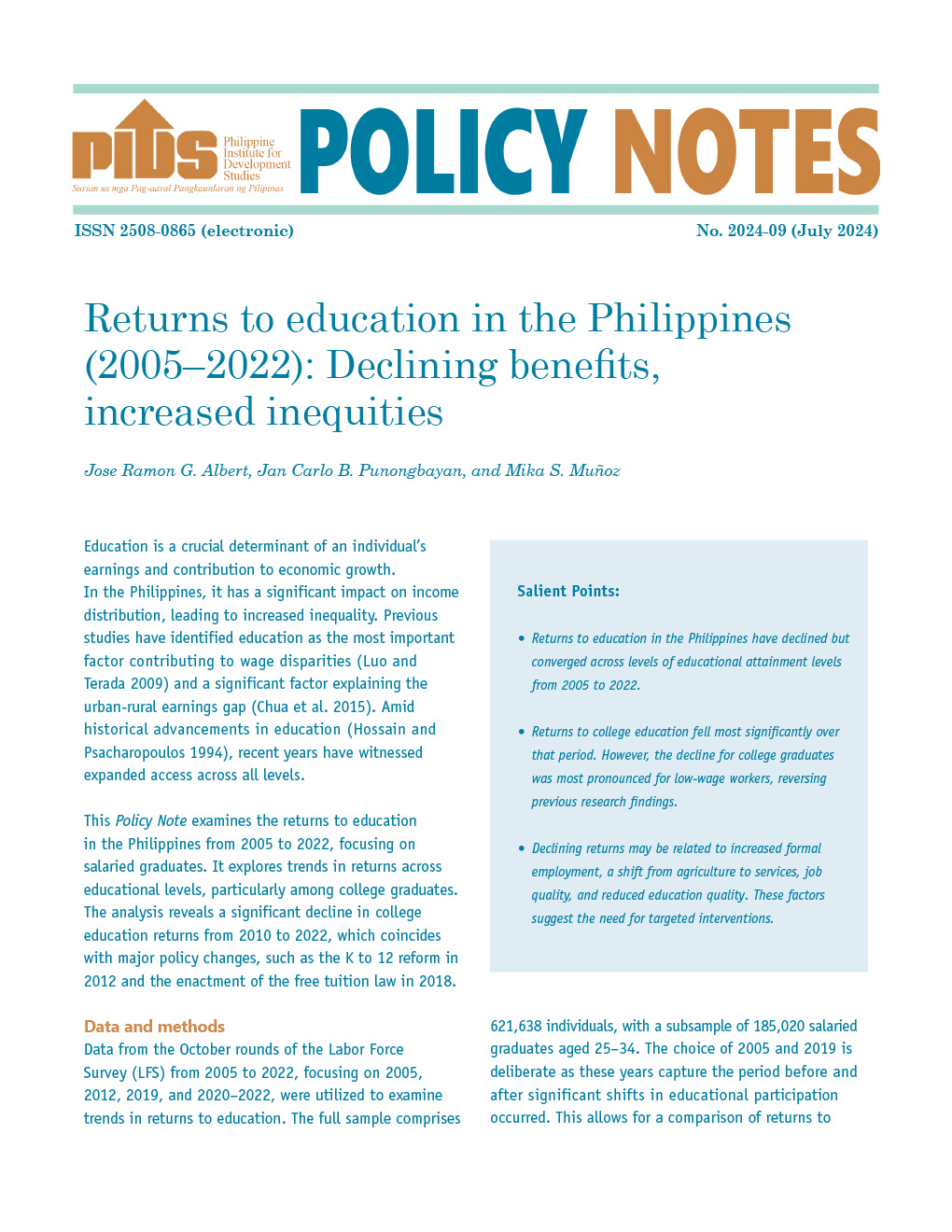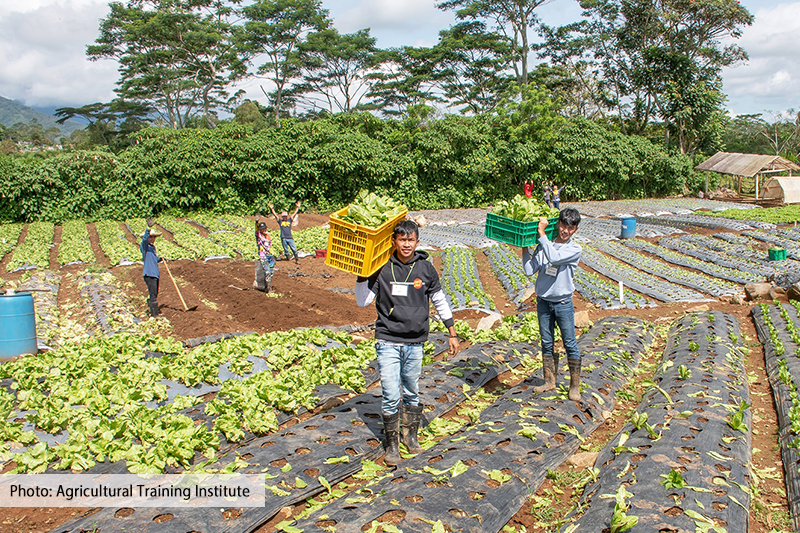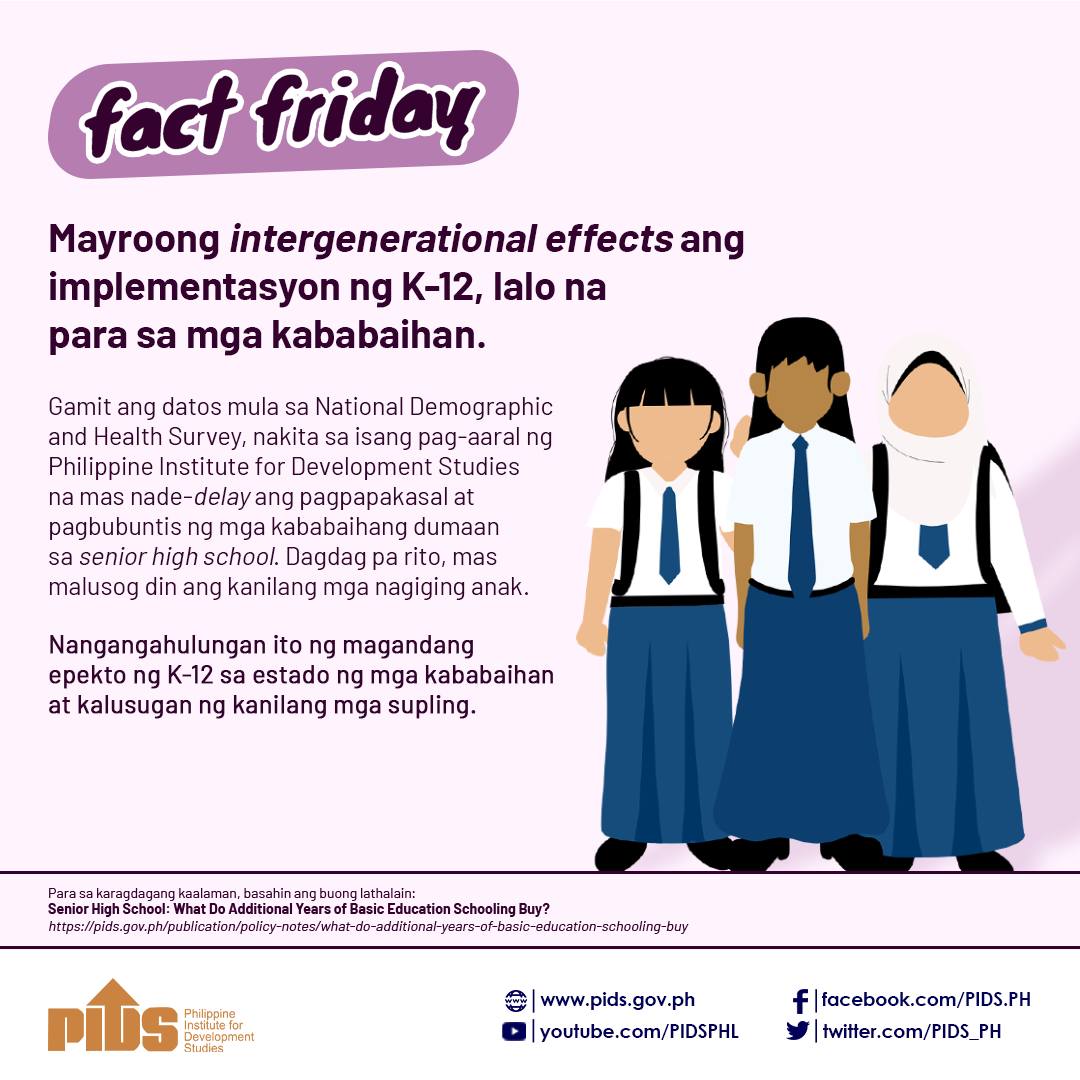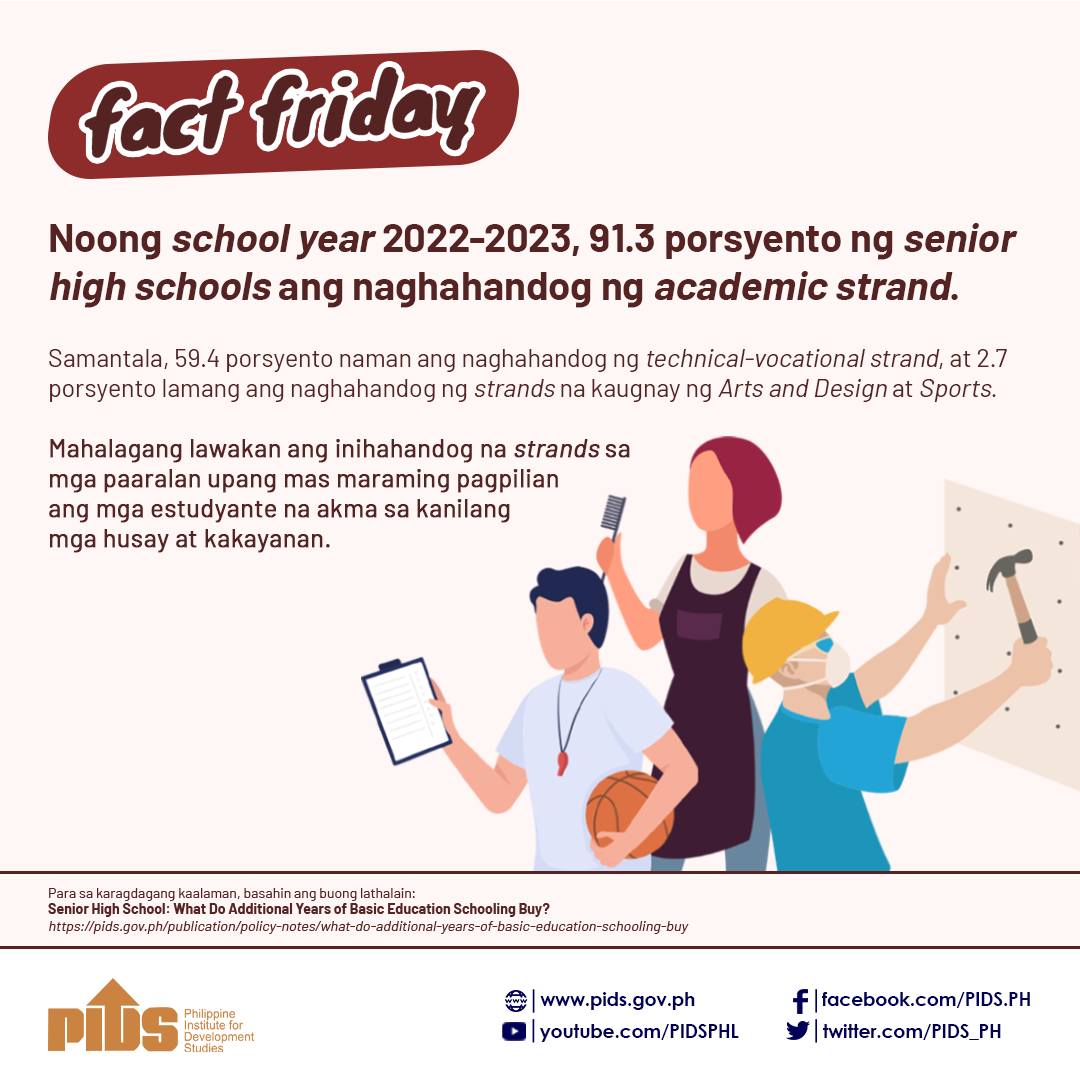THE lack of institutions offering sports and art tracks in senior high school (SHS) led to stiff competition on slots, according to the Philippine Institute for Development Studies (PIDS).
In a study titled Status of senior high school implementation: A process evaluation, PIDS Consultant Karen Brillantes said 98 percent of SHS institutions, including public and private high schools, as well as state universities and colleges, do not offer the sports and arts tracks.
This means that out of the total 11,087 SHS institutions, only 204 institutions or around 2 percent of the total offer a sports and/or arts track in SHS. The other 10,883 institutions do not offer sports and/or arts track.
“It is important to note that due to limited strand offerings, there were students who had to compete for limited slots. Such was the case of student respondents from arts and design, and sports tracks,” the study stated.
Based on the study, the sports track is intended for students planning to pursue work, such as fitness trainers, game officials, tournament manager, recreation attendant, masseur or gym instructor.
It aims to provide knowledge and appreciation of the basic principles and techniques in physical education and recreation. It also covers discussions on various factors affecting social, psychological, and cognitive development in sports leadership and management.
The arts and design track is for students wanting to explore the creative field after completing basic education. It aims to expose the students to several forms of media such as architecture, interior design, industrial design, graphic design, animation, painting, fashion design, photography, and film.
In terms of region, Calabarzon—Cavite, Laguna, Batangas, Rizal and Quezon— has the largest number of SHS institutions not offering the said tracks, followed by Central Luzon and Central Visayas regions.
Due to this, Brillantes said students expressed a lack of choice in terms of tracks and strands due to supply-side issues in program offering.
“Many students fail to enter to strands they like simply because of the unavailability of tracks at provincial and regional levels,” Brillantes said in a PIDS statement.
“The choice should be aligned with the interest of the student given that the SHS program was supposed to put premium in student’s choice,” she added.
The study said there is a need to ensure the availability of all tracks and major strands at least at the provincial or regional level and strengthen career guidance in schools.
Brillantes also said there is a need to expose students to performances and sport competitions like the Palarong Pambansa and to balance their academics and extra-curricular activities.
She added that the Department of Education (DepEd) must also clarify the curriculum implementation design such as subject delivery, classroom assessment, scope of subjects, scheduling.
The DepEd should also address the inadequacies in program inputs such as teachers, learning resources, school buildings, facilities, tools and equipment as well as provide appropriate trainings for teachers so they can better deliver the curriculum in schools.
Moreover, the study also recommended to strengthen mechanisms that ensure standards compliance in schools, institutionalize and fortify monitoring and evaluation at all levels of the DepEd.
There is also a need to provide funds and manpower for SHS monitoring and evaluation, designate SHS focal persons in regional offices, division offices, and schools and immerse coordinators in schools, among others.
In a study titled Status of senior high school implementation: A process evaluation, PIDS Consultant Karen Brillantes said 98 percent of SHS institutions, including public and private high schools, as well as state universities and colleges, do not offer the sports and arts tracks.
This means that out of the total 11,087 SHS institutions, only 204 institutions or around 2 percent of the total offer a sports and/or arts track in SHS. The other 10,883 institutions do not offer sports and/or arts track.
“It is important to note that due to limited strand offerings, there were students who had to compete for limited slots. Such was the case of student respondents from arts and design, and sports tracks,” the study stated.
Based on the study, the sports track is intended for students planning to pursue work, such as fitness trainers, game officials, tournament manager, recreation attendant, masseur or gym instructor.
It aims to provide knowledge and appreciation of the basic principles and techniques in physical education and recreation. It also covers discussions on various factors affecting social, psychological, and cognitive development in sports leadership and management.
The arts and design track is for students wanting to explore the creative field after completing basic education. It aims to expose the students to several forms of media such as architecture, interior design, industrial design, graphic design, animation, painting, fashion design, photography, and film.
In terms of region, Calabarzon—Cavite, Laguna, Batangas, Rizal and Quezon— has the largest number of SHS institutions not offering the said tracks, followed by Central Luzon and Central Visayas regions.
Due to this, Brillantes said students expressed a lack of choice in terms of tracks and strands due to supply-side issues in program offering.
“Many students fail to enter to strands they like simply because of the unavailability of tracks at provincial and regional levels,” Brillantes said in a PIDS statement.
“The choice should be aligned with the interest of the student given that the SHS program was supposed to put premium in student’s choice,” she added.
The study said there is a need to ensure the availability of all tracks and major strands at least at the provincial or regional level and strengthen career guidance in schools.
Brillantes also said there is a need to expose students to performances and sport competitions like the Palarong Pambansa and to balance their academics and extra-curricular activities.
She added that the Department of Education (DepEd) must also clarify the curriculum implementation design such as subject delivery, classroom assessment, scope of subjects, scheduling.
The DepEd should also address the inadequacies in program inputs such as teachers, learning resources, school buildings, facilities, tools and equipment as well as provide appropriate trainings for teachers so they can better deliver the curriculum in schools.
Moreover, the study also recommended to strengthen mechanisms that ensure standards compliance in schools, institutionalize and fortify monitoring and evaluation at all levels of the DepEd.
There is also a need to provide funds and manpower for SHS monitoring and evaluation, designate SHS focal persons in regional offices, division offices, and schools and immerse coordinators in schools, among others.

